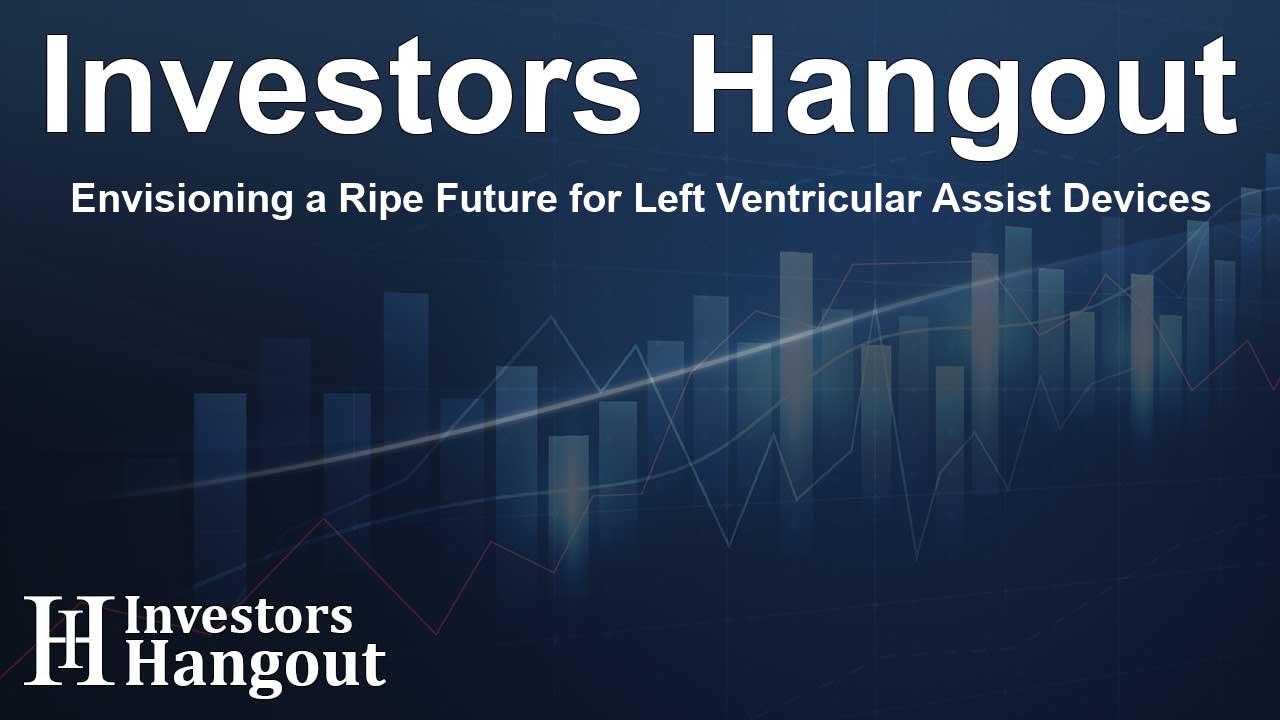Envisioning a Ripe Future for Left Ventricular Assist Devices

The Growing Trend of Left Ventricular Assist Devices
The Left Ventricular Assist Devices (LVADs) market is on a remarkable upward trajectory, showcasing promising growth that piques the interest of healthcare providers and patients alike. With technological innovations fueling this expansion, the demand for such devices has surged in hospitals and specialized cardiac care facilities worldwide.
Market Growth Projections
According to recent estimates, the global LVAD market was valued at approximately USD 1.35 Billion and is poised to reach around USD 1.45 Billion by the following year. This surge is anticipated to culminate in an impressive valuation of USD 2.8 Billion by 2034, reflecting a robust Compound Annual Growth Rate (CAGR) of about 8.4% during the forecast period. The growth signals a significant increase in the adoption of these life-saving devices, which cater to patients awaiting heart transplants or in need of cardiac support.
Technological Enhancements in LVADs
At the forefront of this rapid market evolution are advancements in technology, particularly those integrating artificial intelligence and the Internet of Things (IoT). Recent developments in miniaturized pumps and AI-enabled monitoring have also contributed not only to improved patient outcomes but also to enhanced operational efficiency in hospitals. These innovations enable real-time monitoring, predictive maintenance, and reduced hospitalization durations, providing a smoother experience for both healthcare providers and patients.
Increasing Prevalence of Heart Failure
The spike in heart failure incidents, largely fueled by an aging population and a rise in cardiovascular diseases, has played a pivotal role in driving the growth of the LVAD market. Increased awareness and training among healthcare providers are fostering the adoption of these devices, ensuring that more patients can benefit from innovative cardiac care solutions.
Regional Overview of the LVAD Market
The LVAD market exhibits varied dynamics across different regions. North America leads in terms of market size, propelled by established hospital infrastructures and regulatory frameworks that promote the use of LVADs. On the other hand, the Asia-Pacific region is emerging as the fastest-growing market, thanks to increasing investments in healthcare infrastructure and rising incidence rates of cardiovascular conditions.
North America
In North America, particularly the United States and Canada, hospitals and cardiac care centers are significantly adopting LVAD technology. The focus on sustainable practices and patient safety has resulted in enhanced integration of environmentally friendly designs and AI-driven monitoring systems in hospitals. These initiatives not only boost regulatory compliance but also uplift patient care standards.
Asia-Pacific
The Asia-Pacific region is witnessing rapid advancements with countries like China and India investing significantly in cardiac care technologies. These regions are seeing a growing number of healthcare facilities equipped with LVAD technology and government support that facilitates wider accessibility to advanced cardiac care solutions.
Challenges Facing the LVAD Market
Despite the burgeoning growth prospects, the LVAD market faces significant challenges that could hinder progress. High device costs and accessibility issues, particularly in smaller hospitals or less economically developed regions, present barriers to adoption. Additionally, the integration of innovative devices into existing healthcare systems requires skilled professionals, adding a layer of complexity to the operational landscape.
Strategic Partnerships and Innovations
Strategic partnerships among manufacturers, healthcare providers, and research institutions are crucial in driving innovations across the LVAD market. By pooling resources and expertise, these entities can potentially enhance product developments and broaden access to advanced cardiac care solutions, ensuring better patient outcomes and fostering market competitiveness.
Frequently Asked Questions
1. What is the expected growth rate of the LVAD market?
The LVAD market is projected to grow at a CAGR of approximately 8.4% from 2025 to 2034.
2. What are the key technologies influencing the LVAD market?
Technological advancements including AI-based monitoring and IoT-enabled systems are significantly enhancing device efficiency and patient care.
3. Why is the demand for LVADs increasing?
The increase in cardiovascular diseases along with an aging population has led to higher demand for these life-saving devices.
4. How does the regional landscape affect the LVAD market?
North America is currently leading in market size, while the Asia-Pacific region is emerging as the fastest-growing area due to investments in healthcare.
5. What challenges does the LVAD market face?
High costs of devices and accessibility issues in smaller medical facilities present significant challenges to wider adoption of LVADs.
About The Author
Contact Dylan Bailey privately here. Or send an email with ATTN: Dylan Bailey as the subject to contact@investorshangout.com.
About Investors Hangout
Investors Hangout is a leading online stock forum for financial discussion and learning, offering a wide range of free tools and resources. It draws in traders of all levels, who exchange market knowledge, investigate trading tactics, and keep an eye on industry developments in real time. Featuring financial articles, stock message boards, quotes, charts, company profiles, and live news updates. Through cooperative learning and a wealth of informational resources, it helps users from novices creating their first portfolios to experts honing their techniques. Join Investors Hangout today: https://investorshangout.com/
The content of this article is based on factual, publicly available information and does not represent legal, financial, or investment advice. Investors Hangout does not offer financial advice, and the author is not a licensed financial advisor. Consult a qualified advisor before making any financial or investment decisions based on this article. This article should not be considered advice to purchase, sell, or hold any securities or other investments. If any of the material provided here is inaccurate, please contact us for corrections.
